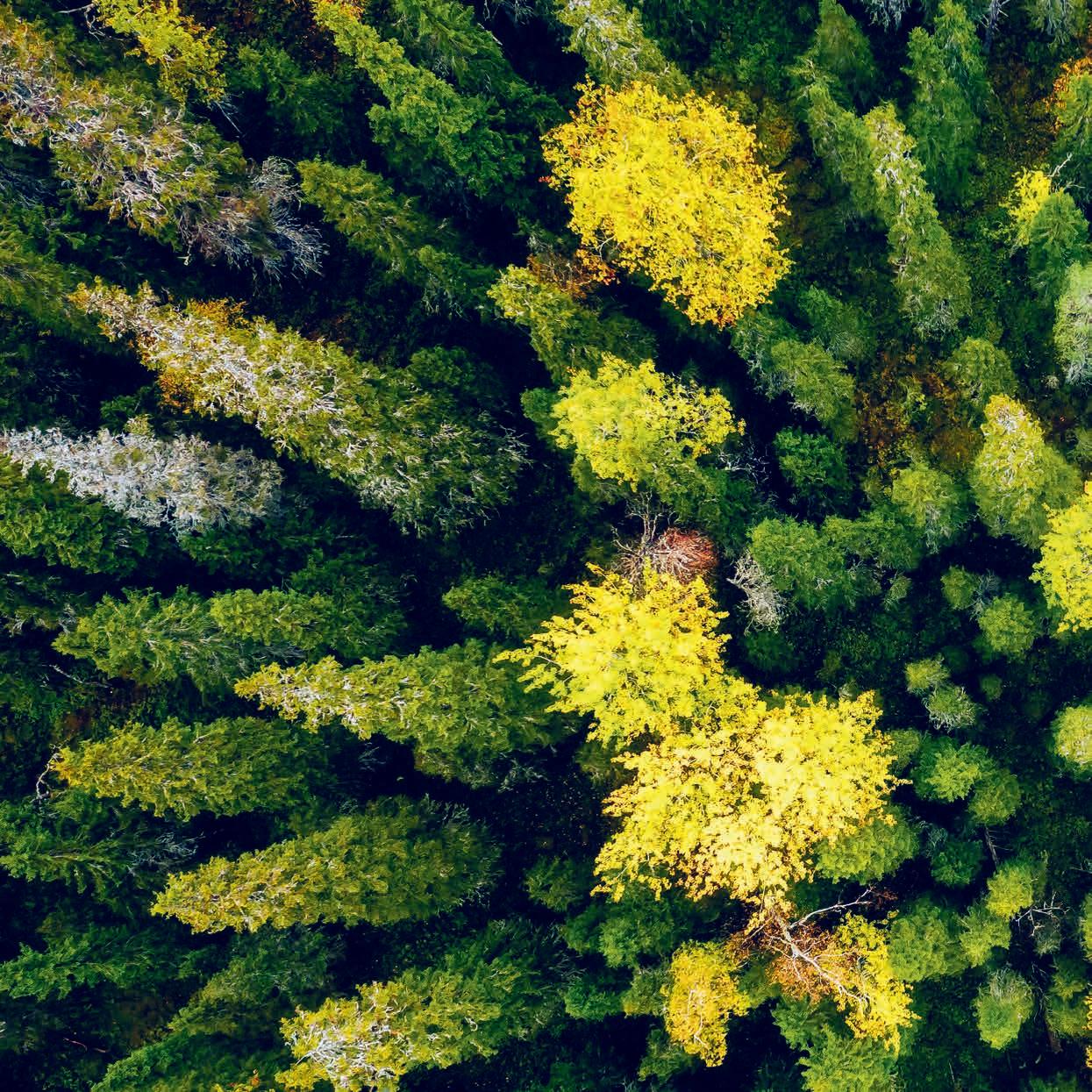our Year 2022



The environmental catastrophe at − or more precisely, in − the Oder River was on my mind a lot last year. I’m sure the same was true for many of you. It is very upsetting to see images of tens of thousands of dead fish on the banks of the German-Polish border river. What’s even more disconcerting is that such a terrible event could happen again: Those responsible in Poland have not been held to account, and the salt discharge into the river continues unabated. It is possible that by the time you hold this activity report in your hands, you will once again be seeing media footage of dead fish on the banks of the Oder River.
Looking at the current state of things, especially if one takes a global view, hope may seem faint that we will be able to turn things around and steer a course towards sustainable development. This makes it all the more important to remember all the environmental movements’ successes, both big and small, that so easily get drowned out in the hustle and bustle of our daily lives. In the past year, these included the designation of new protected areas in the Balkans, the ban on the construction of small hydropower plants in several countries in Southeast Europe and the reintroduction of the once extinct Eurasian black vultures in Bulgaria. Examples like these show that by no means all is horrid and hopeless.
There is also a glimmer of hope regarding the Oder River. The environmental disaster that occurred in the summer of 2022 simultaneously directed attention to the border river that connects us and the Polish government’s river engineering plans. An alliance of conservation organisations, including EuroNatur, has filed complaints against these plans at various political levels. Moreover, with regard to the Oder, an international debate has now commenced as to whether a river can be granted the status of a legal entity for better legal protection.
A lot can be achieved by cross-border cooperation between a variety of civil society actors. I would also like to take this opportunity to thank our donors and funders. And last but not least, a big thank you to the EuroNatur team for the commitment and professionalism with which they conduct the organisation’s successful work. Together we can - and will - shape a better future.
Prof. Dr. Thomas Potthast President of the EuroNatur Foundation

Natural treasures are subject to overexploitation everywhere. EuroNatur stands for a different way. The foundation’s nature and species conservation projects help preserve Europe’s nature in its beauty and diversity. EuroNatur protects large-scale natural landscapes as well as ecologically valuable cultural landscapes throughout Europe.
EuroNatur projects are designed for the long term and involve the needs of local people. We strive not only for the protection of wildlife and its habitats in Europe, but also for an ecologically sustainable development of the respective region – in harmony with nature.
We emphasize cooperating with local partner organizations and provide our partners in the EuroNatur project areas with the necessary support that enables them to effectively protect nature.
Using reputable scientific studies, we provide evidence of the conservation importance and uniqueness of species, landscapes and habitats and of the threats they face.





We work on driving forward the formal protection of endangered species as well as of habitats and landscapes of particular high ecological value. To this end we utilize national and international political structures.
Protected areas and species must be given sustained effective protection. We support control measures and make our demands for rigorous protection measures heard in national and international political institutions as well as in the courts. Where necessary, we exert public pressure on decision-makers (for example by way of protests and media attention).
We generate acceptance of the need for protection and potentially associated restrictions for the local communities. Together with the local people we establish ecologically compatible landuse methods in protected habitats that open up socio-economic prospects. This helps us to win over local people as partners for achieving our conservation objectives, thus laying the groundwork for the long-term effectiveness of our efforts.

A Foundation to protect Europe’s nature
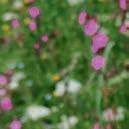

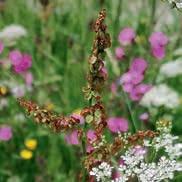
EuroNatur is a non-profit foundation established in 1987 by Friends of the Earth Germany (Bund für Umwelt- und Naturschutz Deutschland, BUND), the German Federation for Nature Conservation (Naturschutzbund Deutschland, NABU) and Environmental Action Germany (Deutsche Umwelthilfe, DUH). It is headquartered in Radolfzell. EuroNatur is legally, organizationally and financially independent, autonomous and non-partisan. A foundation having legal personality (rechtsfähige Stiftung) such as EuroNatur differs from a registered voluntary association (Verein) in that it has no membership base. The latest exemption notice (Freistellungbescheid) was issued by the tax authority in Singen on March 28, 2023 EuroNatur is a member of, amongst others, the following organizations: European Green Belt Association e.V., International Union for Conservation of Nature (IUCN), European Habitats Forum, German League for Nature Conservation and Environmental Protection (DNR), Association of German Foundations, AgrarBündnis e.V. and Wetlands International - European Association.
The current statutes can be found at www.euronatur.org/statutes
New members of the Presiding Committee are proposed by existing members and elected to the Committee by majority vote. The President is elected from among the members of the Presiding Committee. In 2022, EuroNatur’s Presiding Committee had six voting members, all of whom served in a voluntary capacity. Their duties include determining the organization’s strategic orientation, approving annual budgets, and approving the annual accounts. The Presiding Committee oversees the work of the Executive Director with a view to its lawfulness, expediency and economic efficiency. Detailed Committee member profiles can be accessed at www.euronatur.org .
Board of Trustees serves as an advisory committee
EuroNatur’s Presiding Committee can nominate persons to the Board of Trustees who support the organization’s concerns. In 2022, EuroNatur’s Board of Trustees had 19 members, all of whom served in a voluntary capacity. They support EuroNatur in three areas: technical advice, especially with respect to access to funding; public relations work; establishing the organization and its work more firmly within society. The Chairman of the Board of Trustees attends the meetings of the Presiding Committee in an advisory capacity. More information about the Members of the Board of Trustees can be accessed at www.euronatur.org .
The Executive Director is in charge of and responsible for steering the organization’s operative work. In 2022, EuroNatur employed a total of 31 staff, who are active in the units of conservation, administration and public relations. More than 30 voluntary collaborators support the work of EuroNatur Foundation.
More than 25 years ago, the EuroNatur Foundation established a wholly owned subsidiary, the EuroNatur Service GmbH, a limited company. This small but efficient service provider publishes and markets landscape and wildlife calendars and guidebooks on EuroNatur’s project regions as well as a wide range of reference books and exclusive items. Additionally the EuroNatur Service GmbH has specialized on layout and mail order services which it provides to the EuroNatur Foundation and other clients.

This map is for orientation purposes and only shows the project areas depicted in the EuroNatur Annual Report 2022. The project report illustrates the core themes as well as the Foundation‘s working methods by way of example. Successes or challenges in 2022 are highlighted. We are also continuously committed to the protection of Europe‘s natural heritage in projects that could not be presented in detail due to lack of space. A complete overview of all EuroNatur activities can be found in the chapter “Funding priorities 2022“. The EuroNatur newsletter www.euronatur.org/newsletter-en provides information on current developments.

Cantabrian Mountains (Spain)
Neretva Delta (Croatia, Bosnia-Herzegovina)
Bojana-Buna Delta and Ulcinj Salina (Albania, Montenegro)
Šar Mountains (North Macedonia) and Korab-Koritnik Mountains (Albania)
Vjosa/Aoos (Albania, Greece)
Carpathians (Romania, Slovakia)
Northern Dinarides (Slovenia, Croatia, Italy)
Karavasta Lagoon (Albania)
What did we achieve together in 2022 for the protection of nature in Europe?
EuroNatur staff and project partners as part of our international network present their personal highlights.
The governments of several Balkan states have withdrawn concessions for small hydropower plants. In doing so, those in charge are taking a stance against this destructive and inefficient form of energy generation. Moreover, the moratoria on new concessions in North Macedonia, Montenegro and Bosnia-Herzegovina are encouraging for the entire region.
Dr. Amelie Huber, Project Manager Freshwater at EuroNatur
The ecological disaster on the Oder River was a dramatic wake-up call. The fact that we, together with our German and Polish partners, filed a complaint with the European Commission against the plans for major river modification works on the Polish side of the Oder sent a strong signal for cross-border river protection. Polish and German conservationists agree that the Oder River must now be allowed to recover.
Annette Spangenberg, Head of Nature Conservation at EuroNatur
The reintroduction of Eurasian black vultures in the Balkan Mountains is a wonderful success. These birds play an important role in the ecological network. Seeing these huge raptors circling above the mountains never ceases to fascinate me. But the icing on the cake is the fact that reintroduced black vultures are already breeding in the wild. I feel confident about their future, including beyond the project’s conclusion.
Hristo Peshev, FWFF, EuroNatur partner in Bulgaria
We received more than 30 applications for small-project grants in Livanjsko Polje, mainly from young people. This not only confirms that local people are paying attention to our work, but also that they trust us. More and more young people prefer to stay in their native home. This gives us hope for the future of Livanjsko Polje and other karst poljes in Bosnia-Herzegovina.

The local community is behind the designation of Munella as a nature park. I’m delighted about that, especially as I myself am from that region and have been involved in the protection of the Balkan lynx for many years. It is very encouraging to see that not only we conservationists, but also the local people wish to preserve Munella‘s biodiversity for future generations.


To introduce our own cross-organisational mentoring programme seemed like an almost impossible task at fi rst. But we rose to the challenge and brought together many wonderful, committed people who are now working together on their personal development, even beyond the programme. They are becoming increasingly stronger as individuals to tackle the challenging work in nature conservation.
Leonie Kraut, Head of Administration at EuroNatur























Romanian Carpathian Mountains (map p. 5, no. 6). These mountains host the European Union‘s last sizeable primeval forests outside of Scandinavia. Focal areas of the campaign include primeval and old-growth forests in national parks, areas that form part of the European Natura 2000 system of protected areas, and precious forests that are as yet unprotected.
Hardly any habitat in Europe is as important for both species protection and climate change mitigation as the old-growth forests of the Carpathian Mountains. But the destruction of nature continues unabated. The Romanian government is not taking any serious action to protect the primeval and oldgrowth forests in the Carpathians. More and more trees are getting logged, in part even under the guise of climate change mitigation: they are turned into pellet stove fuel.
With the „SaveParadiseForests“ campaign, EuroNatur and its Romanian partner organisation Agent Green aim to preserve the priceless forests of the Romanian Carpathians for posterity. In Brussels, we are fighting for a truly green energy transition (RED4Nature) that jointly considers species protection and climate change mitigation (read more on p. 30-33).
The Romanian Carpathians are home to one of the greatest treasures of Europe‘s natural heritage: Romania still hosts approximately 500,000 hectares of potential primeval and oldgrowth forests, or about two thirds of the last remaining sizeable primeval forests in the EU. These paradise forests are home to many rare species, important ecosystems and significant carbon pools. But in recent years, vast areas have been logged. Together with our partners, we are committed to saving the last wild forests on this continent.
In February 2022, together with Agent Green and ClientEarth, we published a report on the ongoing illegal logging of primeval and oldgrowth forests in Romania. The focus was on four different Natura 2000 sites that are the object of infringement proceedings against the Romanian authorities. The report shows that deforestation is continuing and that valuable forests are being permanently destroyed despite their status as protected areas.
An investigative project conducted in conjunction with an environmental impact assessment laid bare the supply chains of pellet fuel produced in Romania and sold in Western Europe. We were able to prove that in many cases the pellets are valuable primary wood and that the wood very often originated in protected areas. The New York Times, among others, picked up on the report.


In May of last year, Catalina Radulescu of Agent Green managed to convince EU Environment Commissioner Virginijus Sinkevičius of the urgency of the problem of logging in Romania. The Commissioner then criticised the Romanian government for its slow transposition of EU law into national law. Regardless, the Romanian authorities were granted a further period to rectify the situation. The infringement procedure continues to drag on.
In Romania, our partners at Agent Green held several protests and events. The aim was to show the Romanian people how their state authorities deal with the paradise forests. One event, in the Romanian town of Iași, was particularly significant. Not far from the sizeable city there is a natural forest that as a recreational area is popular with the local people. But even here, parts of the forest are affected by extensive logging.
The national forestry authority Romsilva filed several lawsuits against Agent Green, but these legal actions failed. While such attempts at intimidation are worrying, they also show that the work our Romanian partners are doing is seriously unsettling Romsilva.

We will keep up the pressure on the European Commission and call on the government in Bucharest to answer before the European Court of Justice for its inaction in the matter.
Partners: Agent Green, ClientEarth

Funding: Nando and Elsa Peretti Foundation, EIA, EuroNatur‘s donors














Setbacks keep happening and it’s not easy to stay motivated. In this interview, Annette Spangenberg, Head of Nature Conservation at EuroNatur, explains why it is so important that we do not give up on Europe‘s last wild forests, and what motivates her.

We provided evidence of the alarming extent of logging in Romania‘s oldgrowth forests; had we not done so, there would be no EU infringement proceedings against the Romanian government today. Why is the European Commission not taking any further steps?

Those responsible in Brussels appear to have a blind spot when it comes to deforestation in Romania. We furnished the European Commission with all the necessary evidence showing that Romania is violating EU Directives in force, and yet the EU continues to rely on diplomacy. That’s not necessarily the wrong tactic if there is a true basis for negotiation, which in this case would be a sincere desire to jointly protect the forests. But that basis does not, as yet, exist.
Many MEPs voting on RED are not aware of the value of primeval and oldgrowth forests for climate change mitigation and biodiversity. Moreover, there is still this myth floating around that wood-burning is carbon-neutral. That’s also why we launched our RED4Nature campaign.







Why do we need to continue with our work and what are the next steps?
Even though the evidence is overwhelming already, we will not stop presenting further proof of overexploitation in the Romanian Carpathian forests − even when the European Commission finally passes on the case to the European Court of Justice. We will keep going until the message that things must change finally sinks in with the decision-makers.











What motivates you to keep working to protect Europe‘s last wild forests?
It’s the charisma of old trees, this feeling of standing in a forest that has lived and persisted for centuries, this cycle of natural growth and decay. When I see these trees I suddenly feel very small. And to see them cut down, lying on the ground, just feels utterly wrong!
Interview: Katharina Grund
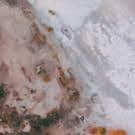



Ecologically valuable watercourses in the Balkans, the blue heart of Europe.

The Balkan Peninsula’s wild and pristine river landscapes are among Europe’s most important natural treasures. In more than ten years of campaigning to save the Balkan rivers, there’s a lot we have achieved together with our partners, especially in terms of raising awareness among local people as to the adverse impacts of hydropower. Local groups are fighting back against the energy companies’ often illegal activities, and more and more often national governments are deciding against the destruction of rivers by hydropower projects. But the issue has not gone away and is unlikely to do so any time soon, a fact that is also borne out by the latest developments in the European Union‘s renewable energy policy, which continues to involve a level of reliance on hydropower.

Our aim is to ensure that the Balkan rivers will continue to be allowed to flow freely and that any utilisation of these rivers will be sustainable.
Free-flowing rivers have become very rare in Europe. But they still exist in the Balkans, where even today breathtakingly beautiful river landscapes can be found. However, nature has been coming under increasing pressure. Together with our many fellow campaigners, we draw attention to the destruction and exploitation of the Balkan rivers and highlight alternatives.

One of our most effective tools has been the “Lawyers for Rivers” initiative. In 2022, our lawyers helped prevent the construction of hundreds of hydropower plants.



After several years of persistent lobbying on our part, the government of the Republic of North Macedonia decided to abandon 25 of the 29 planned small hydropower projects in the newly designated Šar Planina National Park (map p. 5, no. 4), a trailblazing decision that strengthens the value of protected areas.
In June 2022, in the presence of Albanian Prime Minister Edi Rama, Albanian Environment Minister Mirela Kumbaro and Patagonia CEO Ryan Gellert signed a Memorandum of Understanding (MoU) to establish a Vjosa Wild River National Park. The MoU picks up on measures we proposed in our campaign.
In February 2022, the European Investment Bank improved its Biodiversity Standard by taking into account many of our recommendations. This new standard should now prevent the Bank from financing new hydropower projects.
We will increasingly focus on particularly harmful large-scale projects, such as the Skavica hydropower plant in Albania. To this end, we will support local initiatives and help them build effective campaigns. In addition, we aim to further strengthen our campaign partners in the Balkans so that they will be able to act as national focal points for river protection and local resistance movements without being dependent on our support.
Partners: Riverwatch, EcoAlbania, MedINA, Pindos Perivallontiki, IUCN ECARO, Tour du Valat, ClientEarth, DPRS, Eko-svest, Front 21/42, North Green Association, Res Publica
Funding: MAVA Foundation, Aage V. Jensen Charity Foundation, Manfred-Hermsen-Stiftung for Nature Conservation and Environmental Protection, Fondation Genevoise de Bienfaisance „Valeria Rossi di Montelera“, EuroNatur‘s donors


Narta Lagoon in the estuary of the Vjosa River in Albania (map p. 5, no. 5).


Through the course of each year, the Vjosa-Narta area is habitat to more than 220 bird species (including greater flamingo and pelican). It is of supraregional importance for birds migrating along the Adriatic Flyway to their wintering or breeding grounds. The long list of accolades awarded to this area is no coincidence: part of the Albanian network of protected areas, Important Bird Area, Key Biodiversity Area, and official candidate for the Emerald Network (pursuant to the Bern Convention; after accession to the EU these will be Natura 2000 sites). The Narta Lagoon is located in the mouth of the wild Vjosa river. Nevertheless, plans are afoot to build an international airport here. The Albanian government retroactively cut the area for the airport right out of the Vjosa-Narta protected area. Construction work has already begun - without permission.


Our aim is to stop the Vlora International Airport project. The Vjosa’s entire catchment area should be protected as a national park, including the river delta.

defending the significance of nature conservation in Albania and in Europe.
Zy djon Vorpsi, PPNEA
In cooperation with a team of lawyers, we have been supporting our Albanian partners in taking legal action against the retrospective change made to the Narta-Vjosa protected area boundaries.
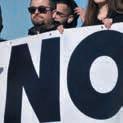
Our Albanian partners brought an additional lawsuit to the competent administrative court on the grounds of errors in the approval process for the airport project. In a very short session the sitting judge rejected the legal action. PPNEA and AOS were appealing that decision.


By building an airport in a previously designated protected area, the Albanian government is circumventing the rule of law to the detriment of nature and in favour of narrow interests in a case of political particularism. Who exactly will benefit from the airport project is unclear. However, we are aware of plans to build a luxury tourist resort on the coast and it appears that those opposed to the plans are afraid to openly voice their opposition. It is proving difficult to find national experts who will prepare written expert witness statements and defend their position in court. Local people are equally fearful to openly take a stance against the airport, as they (same as the experts) fear reprisals and many of them also expect that the project may improve their economic prospects.
We will continue to support our partners in taking legal action against the airport project.

Partners: PPNEA, AOS
Funding: DIMFE, EuroNatur‘s donors




Ecosystem network with an extraordinarily high level of biodiversity, forming a 12,500 km long corridor along the route of the Iron Curtain of the Cold War era (map p. 5). The European Green Belt connects eight biogeographical regions and 24 nations.

Despite the European Green Belt’s great ecological importance, few funding options exist for the initiative. As a result, there is a lack of capacity for the planning and implementation of projects that contribute to biodiversity conservation and foster sustainable development along the ecological network.
Our aim is to fundamentally change this situation by means of the BESTbelt project. The European Union will make available a total of € 3.5 million (€ 2.2 million in the reporting year) for tangible projects along the European Green Belt, from Norway all the way south to Greece and Turkey. Funding will be provided to initiatives that preserve biodiversity and apply promising approaches, for example in sustainable regional development.
The European Green Belt is one of the most ambitious nature conservation projects in Europe. It forms the backbone of a pan-European ecological network, connecting habitats and populations of species of flora and fauna, and enabling exchanges between them. This network is threatened above all by increasing land use intensification.
The first eleven eligible projects have been selected. Each project will now receive funding of up to € 40,000 for a wide spectrum of activities ranging from the restoration of historical wells in Bulgaria as microhabitats to making tourism on Latvia‘s coasts more sustainable.
More than 60 project applications were received on foot of the First Call for Proposals. This is a great success and demonstrates the need for funding for conservation projects along the entire European Green Belt. It was also very heartening to see that many applications came from actors with whom we had had no prior contact. The potential along the European Green Belt is even greater than we had initially assumed.
At a conference in Montenegro in the first week of November 2022, the selected stakeholders presented their projects to a wide audience from 22 countries. The valuable exchanges between new and established actors along the European Green Belt enhanced connectivity in the European nature conservation community.


A Second Call for Proposals will be issued in 2023, offering the opportunity to obtain funding for the implementation of further exciting ideas. It may be possible to see initial successes of the small projects that commenced in the reporting year as early as 2023. Our aim is to provide additional support for the development of green jobs and to organise a youth work camp.
Partners: BUND, European Green Belt Association-Board
Funding: European Commission, EuroNatur‘s donors




For me, the ultimate beacon of hope is meeting people who want to make a difference, who don‘t give up even though working to build a liveable future can be hard and frustrating. These allies do exist, you just have to find them,” says Sandra Wigger, Project Manager for cultural landscape protection at EuroNatur. We present two of those people.
Shqipe Shala loves what she does. “I am a devoted beekeeper, so there is nothing that cannot be achieved. Even as a child, I was fascinated by bees and I still am today. My husband Liridon and I have invested a lot. We laid the paths to our hives in the mountains ourselves. That took a lot of money, energy and courage. It is why we are virtually the only beekeepers in the Prizren region.”
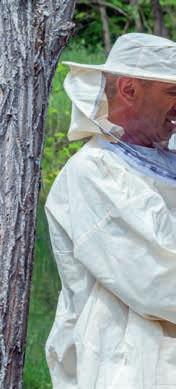
I have received specialist and financial support from EuroNatur, but also encouragement on a human level.
Shqipe Shala, beekeeper in Kosovo
Shqipe Shala‘s apiary is one of the pilot projects demonstrating a responsible approach to nature that are receiving support from EuroNatur. And while Shqipe can talk confidently about her work today, this was never something she could simply take for granted. It took her a while to establish herself as a businesswoman in the patriarchal environment of rural Kosovo. At first, she was met with suspicion and criticism - and comments along the lines of: what we men couldn‘t do, you certainly can‘t do as a woman.
Shqipe now owns 200 beehives, her apiary Bletaria Etniki supplies the region with honey that is soon to be officially certified organic, and she also cultivates some strawberry fields where the bees find pollen in spring. In fact, Shqipe deserves to have received some form of recognition from the state. After all, she’s helping to counter the increasing rural exodus from Kosovo, and to protect nature. But that‘s far from being the case. Officials gave her a hard time, even put her on their blacklist. She found new hope only when she met Sandra Wigger from EuroNatur.







Four hours‘ drive to the southwest, and across the border into Albania, farmer Danjel Bica has a similar vision: he wants the people in the villages on the edge of the Korab-Koritnik Nature Park (map p. 4, no. 5) to live in harmony with nature instead of exploiting it. In the mountains of the Dibër region grow many plant species known for their healing properties. As a result, the plants have become rare in other parts of Europe. Globally, demand for medicinal herbs is high.

We have now established three farms that grow and successfully sell medicinal plants.
Read the full text about the two conservation pioneers Shqipe Shala and Danjel Bica on our website at enatur.org/1046
People gather more than nature can supply, and more than they can sell. They harvest them before the plants have flowered or before the fruits are ripe. It is this kind of exploitation that we want to stop”, says Danjel Bica, a farmer himself and also founder of the Young Environmental Experts Association (SHERM for short). Like Shqipe Shala, Danjel Bica has also received support from EuroNatur for his pilot project, and is pleased with its success. His idea of sustainable cultivation of herbs and medicinal plants has been welcomed with open arms by the farmers.
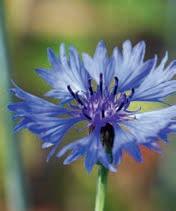


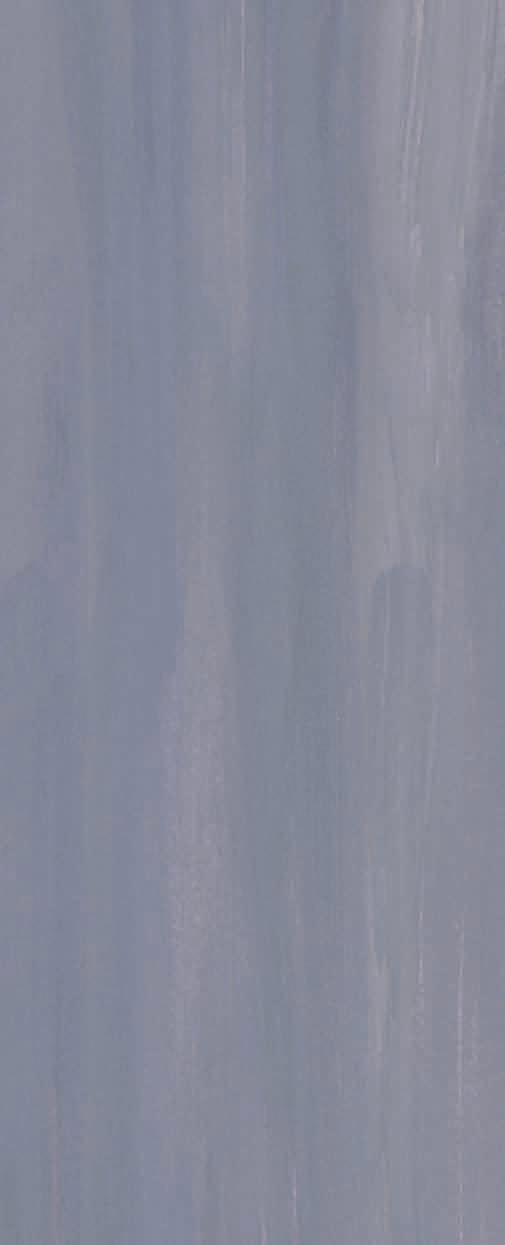
Cantabrian Mountains in northern Spain (map p. 5, no. 1). The region is home to two brown bear populations that are in contact with each other: one in the west, the other in the east of the mountain range.
The many years of conservation efforts by EuroNatur and its Spanish partner Fapas have significantly contributed to the fact that the Cantabrian Mountains still host brown bears to this day and that at least the western population has stabilised. But humans continue to harm Spain‘s bears through illegal hunting, unsupervised wild boar hunts and disturbance resulting from recreational activities, among other things. A major issue is the local authorities’ lack of commitment to brown bear conservation. Fapas is trying to fill this gap. While there is an ongoing good cooperation with Seprona, the Spanish environmental police, the Asturian provincial government is going so far as to actively blocking Fapas‘ work. With that in mind, it is all the more remarkable that the bear population in the west of the Cantabrian Mountains is stable, mainly thanks to Fapas’ work, and that the number of female bears with cubs has been increasing − even in regions where bears have only been sighted sporadically so far.
Our aim is to save the brown bears in the Cantabrian Mountains from extinction and ensure their long-term survival.

For a number of years now, brown bears and lynx have been making something of a comeback in Europe. Together with our partners, we develop solutions that make possible the peaceful coexistence of wild animals and people. We are committed to protecting bears and lynx as well as their habitats, while also taking seriously the concerns and problems faced by shepherds, beekeepers and livestock farmers.
The measures developed by Fapas for the protection of beehives are working: In 2022, none of the beehives secured by means of protective equipment were attacked by bears. This is an important success in the quest for peaceful coexistence of bears and humans in the region, where beekeeping is widespread.

In order to better meet the bears’ nutritional needs, 530 fruit trees were planted on a total of 12 remote farms.

The cooperation with the Spanish environmental police continues to be exemplary: among other activities, six illegally placed bear traps were disarmed during a joint excursion into the bear area.

Camera traps were placed at strategic locations in the new project area in the province of León to detect illegal hunting activities.
As the bears have now begun to spread to the south of the Cantabrian Mountains, Fapas will further intensify efforts to protect the animals and their habitats in the province of León.
Partner: Fapas
Funding: EuroNatur‘s donors and EuroNatur‘s sponsors

Source population: Carpathians (Romania, Slovakia) (map p. 5, no. 6 and 7).
Release region: Northern Dinarides (Croatia, Slovenia, Italy) (map p. 5, no. 8).






Lynx were extirpated from Central Europe for a long time. Since the 1970s, lynx have been actively reintroduced in Switzerland, Germany, the Czech Republic, Austria, Slovenia, France and Italy. But the new populations are still small and isolated.


The „LIFE Lynx“ project, funded by the European Union and supported by EuroNatur, is designed to help refresh the gene pool of the lynx population in the Dinarides in particular, and to connect that isolated population with others, especially with the lynx population in the Alps.



Video “Run free, lynx Lubomir!” about the release into the wild of a lynx in Croatia; Link: enatur.org/1044

Two more male lynx were successfully released in Croatia and Slovenia respectively.
A survey conducted by our partners showed that the majority of respondents in Slovenia, Croatia and Italy were positively disposed towards the reintroduction of lynx.

Environmental education plays an essential role in shaping such sentiment. Therefore, the two „lynx trails“ in Mašun (Slovenia) and Risnjak (Croatia) were further enhanced and promoted. On these nature trails the interested public can learn much about lynx and their habitat (for more information, see www.lifelynx.eu/ lynx-walk-guide/).
Since the start of the project in 2017, fifteen lynx were released in Slovenia (ten individuals) and Croatia (five individuals). The status of the Dinarides/Julian Alps lynx population has demonstrably improved as a result. All territories in the Slovenian and Croatian Dinarides now host male and female lynx. Increasingly, camera trap images from the Dinarides show offspring from matings between
native and introduced individuals. The many cubs are visible proof of the project’s success. Another particularly encouraging achievement is the successful reintroduction in the Slovenian Alps of five lynx who are now reproducing.

We have a great responsibility not to put at risk the stability of the felines’ source populations and to ensure that the animals are doing well in their new homes. In 2023, there will be a focus on the collection, analysis and publication of data from the seven years the project has been running.
Partners: University of Zagreb, Slovenia Forest Service, Hunters Association of Slovenia, Institute of the Republic of Slovenia for Nature Conservation, Technical University in Zvolen, University of Ljubljana, Association Progetto Lince Italia, Karlovac University, Biom, ACDB, Italian Carabinieri special command unit for the protection of forests, the environment, and the agri-food sector
Funding: EU LIFE, EuroNatur‘s donors and sponsors


Bird habitats along the Adriatic Flyway, which runs from north-eastern to central Europe across the Balkans to Africa. 34 project areas in six countries of the Western Balkans: Slovenia, Croatia, Bosnia-Herzegovina, Montenegro, Albania and Serbia.
After habitat loss, the biggest threats to wild birds worldwide come from bird hunting, capture and trade. In the Mediterranean region alone, an estimated 25 million birds are illegally killed or taken from the wild every year. This contributes to significant declines in many migratory bird populations. Add to this other factors, such as the outbreak of avian flu in the spring of 2022, and the pressure mounts abruptly, especially on small populations of colony-breeding species.
With the help of our network of partners in conservation, our aim is to reduce the illegal killing, trapping, taking of and trade in birds in the Mediterranean region by at least 50 per cent by 2030 (compared to our 2015 baseline). We call for effective measures to be taken by the national governments of the Western Balkan countries to end illegal hunting. As their implementation is slow, civil society engagement remains crucial in the fight against illegal bird hunting.
Birds cross borders, seemingly with ease. But on their migration routes, these endurance flyers encounter many hazards, such as direct persecution, habitat loss, environmental toxins and deadly power lines. We are committed to minimising these dangers for Europe‘s migratory birds.

In April 2022, the 4th Adriatic Flyway Conference met in Zadar, Croatia. More than 60 participants from 13 countries developed measures to halt the downward trend in migratory bird populations. In a joint declaration, EuroNatur and its partners call for a stronger commitment of the Balkan countries’ governments with regard to measures against illegal hunting and bird poisonings.
In Albania, several illegal hunting hides were reported to the authorities. In the Albanian Karavasta National Park (map p. 5, no. 9), illegally erected bird nets were removed and two poachers were caught. Police officers confiscated their hunting weapons and imposed fines. This shows that successful cooperation with the authorities helps in combatting illegal hunting.
Illegal bird hunting has significantly been reduced in several project areas, for example in the Neretva Delta (map p. 5, no. 2) in Croatia and in the Terbufi Plain in Albania (by more than 50 percent compared to the 2015 baseline in the latter).


The governments of more than 54 countries in Europe and the neighbouring Mediterranean region have committed to halving the illegal killing of birds by 2030. They are also taking a zero-tolerance approach to illegal hunting.
Conservation projects can primarily affect positive change at the local level. But that is not enough to comprehensively eliminate geographically widespread threats such as illegal bird hunting in the Mediterranean region. Foundations of Success (FOS) selected our migratory bird projects along the Adriatic Flyway as a case study with a view to analysing how local successes can be spatially upscaled.

Partners: BirdLife International, BirdLife Cyprus, VCF, IUCN Med, Tour du Valat, BPSSS, HDZPP, Biom, Naše ptice, CZIP, MSJA, PPNEA, AOS, DOPPS, Hellenic Ornithological Society



Funding: MAVA Foundation, FOS, Gordon & Betty Moore Foundation, Walton Family Foundation, EuroNatur‘s donors and sponsors




Project areas in five countries of the Western Balkans: Slovenia, Croatia, Albania, Serbia and North Macedonia.
Pylons and power lines are so ubiquitous in our landscape that many of us hardly notice them anymore. For Europe‘s birdlife, however, they pose a deadly threat. It is diffi cult to quantify the losses from fatal electrocutions and collisions with unsecured transmission infrastructure, but they are known to be massive (in Germany alone, annual mortality from transmission infrastructure is in the order of 1.5 to 2.8 million birds). Especially the large bird species, such as storks, cranes, owls and other birds of prey, are frequently represented among the victims.
Our aim is to signifi cantly reduce bird losses due to electrocution and collision. To this end, several thousand electricity pylons throughout the Mediterranean region are to be insulated to make them bird-proof. With this, we aim to demonstrate that it is possible to reconcile energy supply and bird protection.

Over the past year, 1,353 particularly critical pylons were insulated in Southeast Europe. There was very good cooperation between our partners and the grid operators in the countries concerned.
An example from Slovenia, where a particularly large number of pylons were isolated, shows just how quickly these measures can positively impact endangered bird populations: The number of eagle owl territories in the project area increased by one third in 2022 (compared to 2018).
On the Croatian island of Cres, a group of volunteers searched for dead birds under unsecured power lines. Their reports helped identify particularly dangerous power lines, which are prioritised for protection measures.
Although unsecured transmission infrastructure poses a lethal threat to birds, pylons and power lines are also utilised by many birds. Storks and birds of prey, for example, often nest on pylons. In Albania and Serbia, our partners have installed several nesting platforms for white storks. Most of them were accepted by these large birds and allow for safe breeding at sufficient distance to the live components.


Together with our partners we will continue this successful work. One of the focal points will be the Kvarner Gulf in Croatia, where unsecured power lines have been claiming many lives among the local Griffon vulture population.
Partners: BirdLife International, VCF, IUCN Med, WWF Spain, WWF Greece, BPSSS, HDZPP, Biom, PPNEA, AOS, DOPPS

Funding: MAVA Foundation, Natum Foundation, EuroNatur‘s donors

In 2022, a strong focus of our EU policy work continued to be on energy. Just over two years ago, the European Commission announced a revision of the Renewable Energy Directive (RED). However, the Commission‘s proposal did not ensure that future renewable energy in the EU would not have a negative impact on nature. The so called REPowerEU plan to make Europe independent of Russian gas and oil as soon as possible further increases the pressure on nature.
EuroNatur has been lobbying EU decision-makers through the RED4Nature campaign for a revision of the RED that focuses on environmentally friendly energy production generation. In particular, dam construction on rivers and the logging of woody biomass in primeval and old-growth forests cannot be tolerated. With a clear statement for a RED that does not come at the expense of biodiversity and local communities, we approached the European Commission in April 2022 together with more than 40 non-governmental organisations. Highlights included our lobbying weeks in Brussels. In addition to intensive discussions with Members of the European Parliament, some of whom gave interviews on camera, we organised two high-profile actions on the Place du Luxembourg in Brussels’ European Quarter: On June 22, three female artists used a live performance to draw attention to the urgency of protecting Europe‘s nature. On the evening of June 23, EuroNatur staff showed a video on the busy square, communicating the message that the Renewable Energy Directive can work for both the climate and nature. It reached an estimated 2,000 people from relevant EU institutions. The final negotiations on the RED concluded at the end of March 2023, unfortunately with an unsatisfactory outcome. Politicians settled for weak safeguards to stop logging in protected forests and stop the construction of new hydropower dams for energy generation.
Information on current developments can be found on our website at red4nature.eu.
In Brussels, EuroNatur defends civil society’s and nature’s common good interests. We work toward fundamental change in energy, transport and agricultural policies and aim to ensure that investments are steered in the right direction so as to achieve the EU‘s prime environmental objectives.
Partners: Riverwatch, Bankwatch, Agent Green, ClientEarth, FFF Poland, WWF, BirdLife, NABU, CAN Europe, EEB, SolarPower Europe, EGEC

Funding: MAVA Foundation, Patagonia, Nando and Elsa Peretti Foundation
Read the report Behind the Green Recovery“ at enatur.org/1049


Together with four national partner organisations, EuroNatur and the NGO Bankwatch held a total of eight roundtable discussions in Bulgaria, Croatia, Latvia and Slovenia in 2022 with a view to promoting constructive dialogue between key stakeholders. The aim was to uncover the reasons as to why so little public money flows into biodiversity conservation, even though funds are theoretically available. Moreover, it was hoped that a sensitive exchange between all stakeholders might also reveal hidden causes.
A report published in June 2022 by EuroNatur and Bankwatch shows that in Central and Eastern Europe, less than one percent (!) of the Covid-19 recovery fund is spent on biodiversity conservation or restoration. And this is despite the fact that the so-called Recovery and Resilience Facility (RRF) is considered the EU‘s main tool for „green recovery“ after the Covid-19 pandemic. An unprecedented € 672.5 billion have been made available, not only for economic recovery but also to drive ecological change in Europe, including halting biodiversity loss. Together with a network of NGO

partners, we were able to show that, at a conservative estimate, at least ten percent of the funding is going to projects that actually harm biodiversity. This includes, for example, support for hydraulic engineering projects in Hungary, Croatia, Latvia and Poland involving the construction of reservoirs, pumping stations and canals or the channelisation of rivers. These developments also affect highly sensitive habitats that are components of the European Natura 2000 network of protected areas. Many of these projects were planned and negotiated behind closed doors, without disclosing their exact location and without the impact on nature ever having been adequately assessed. The report „Behind the Green Recovery“ has had an impact: Shortly after its publication, the responsible expert group at the European Parliament explicitly pointed out the RRF’s weaknesses to the European Commission, meaning that our message was received by the powers that be. Now it is important to keep up the public pressure.
Partners: Bankwatch, DOPPS, Zelena Akcija, Balkani, Green Liberty Latvia, Hnutí Duha, Agent Green
Funding: MAVA Foundation

We need to move away from forms of energy production that destroy nature and instead address the ecological emergency in its entirety. In this interview, Bruna Campos, Senior Policy Manager at EuroNatur, outlines what such a turnaround might look like.

EuroNatur is advocating intensively for a systems change towards decentralised energy generation. What does that mean?

In a decentralised system, villages, communities or cities produce their own energy. Let’s say people in one village generate their own solar energy. If a person or family produces more than they consume, the surplus is fed into the grid. That way it is available for the immediate neighbours or for the neighbouring village. Conversely, if someone uses more energy than they have produced, they can use the energy source that is closest to them. This also means that countries like Germany must no longer abuse the environment and human rights in other countries to generate energy. It is frustrating to read that preparations are underway to import hydrogen from Angola to Germany − hydrogen which is produced using energy generated by new hydropower plants that destroy nature. That’s pure neocolonialism.
Is it still possible to fundamentally restructure the energy system in time, given that the climate and biodiversity crises have already been manifest for some time now?
I am optimistic and, yes, I believe so. There are already thousands of energy communities in Europe, but there is the potential to build so many more. And environmental safeguards are not a burden or a barrier, but a way of ensuring that our energy is sustainable. Finding the most appropriate form of energy generation for each area should consider how sensitive species or habitats would react to different kinds of energy usage. Careful planning is essential for nature conservation and energy sustainability. This can happen quickly, with the right data, civil society involvement and science. It merely requires political will.
EuroNatur is opposed to the use of woody biomass and hydropower. Which renewables are good alternatives?
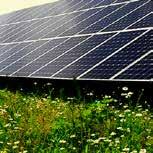

We see a lot of potential in the production of solar and wind energy as well as in the use of very shallow geothermal energy. But people also need to change the way they use energy at home. Heat pumps are a good option, especially in rural areas. This is also very much about using our built-up areas as soon as possible, instead of developing new areas on land or at sea. There is potential in the many small areas that together have a big impact: in parking lots, for example, or on the rooftops of industrial premises and petrol stations.

And what about wind energy? What about the images of bird collisions that immediately spring to mind?
Wind energy is a good choice if it’s used in the right place. In this context it is essential to map the areas frequented by protected bird species. It is obviously not a good idea to build wind farms in the flight paths of migratory birds, for example. So we must avoid adding additional pressures to already damaged ecosystems!
The biggest threat to seabirds, for example, is to end up as bycatch in fishing gear. If that problem were to be eliminated, seabird populations would be able to withstand a certain level of mortality due to wind farms.
You mean we have to prioritise where we do harm?
What I’m saying is that we can’t do everything, because there is a limit to our planet’s ecological carrying capacity. Decisions need to be made on what we truly need and how we can achieve that without compromising nature. So yes, that may entail foregoing one particular activity for the sake of another. Political decisions must be taken in a way that ensures our long-term survival, follows scientific advice and is morally defensible.
Interview: Katharina Grund









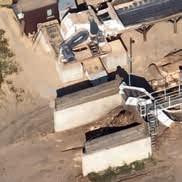

The report on the on-going illegal logging of primeval and oldgrowth forests in Romania, which we published together with our partners in February 2022 (read more on p. 9), generated a great deal of media coverage. The press also reported on the Romanian government‘s plans − as well as those of numerous other EU countries − to invest billions of Euros provided by EU Recovery and Resilience Facility (RRF) in “nature conservation projects” that unfortunately are not deserving of that label. Here is a selection of quotes from the published pieces:

In February, three environmental NGOs − Agent Green from Romania, EuroNatur from Germany and the environmental rights organisation ClientEarth, which operates across Europe − published a report documenting large-scale, advancing deforestation in old-growth forests. According to EU law, these forests should not be touched. And the EU has already opened infringement proceedings against Romania, calling the country to task on its illegal logging operations. The fact that even the on-going infringement proceedings have been unable to halt the logging activities shows just how much pressure the continent’s forests are under. It also shows up the unreadiness of the European judiciary to defend and apply the law.
The report by NGOs Agent Green, EuroNatur and ClientEarth finds that large-scale habitat destruction continues in four Romanian Natura 2000 sites − despite on-going infringement proceedings against the country for illegal logging. [...] Bruna Campos, Senior Policy Manager at EuroNatur, also suspects that pending EU biodiversity legislation, and the current debate as to what does or does not count as old-growth forest, may have prompted an increase in logging operations.
Although the violations of EU environmental law have been known for a long time, the EU has now pledged approximately € 200 million to Romania, allegedly for new technologies to help protect the Carpathian forests from extreme weather events. But the „recovery plan“ presented by Romania has obviously been drawn up in pursuit of other goals, says Thomas Freisinger of EuroNatur. „Among other things, the funding is to be used for forest road construction to facilitate forest access“, the conservationist states. „Past experience has shown that this will likely further accelerate deforestation, even in very remote areas.“
Those honoured with the EuroNatur Award are exercising their commitment at a time of war and at a time that is also characterised by increasing attempts to intimidate civil society actors devoted to nature conservation and climate change mitigation. We wish to send a signal of solidarity with Ukraine.
EuroNatur President Prof. Dr. Thomas PotthastThe 2022 EuroNatur Award was awarded to the German climate and forest conservationist Antje Grothus, the Ukrainian scientist and protector of old-growth forests Prof. Dr. Fedir Hamor, and to Adelina Zakharchenko for the Free Svydovets nature conservation movement from Ukraine. Independently of each other and each working under different conditions, this year‘s award winners campaign for forests in Europe with great courage and perseverance. Impressions of the award ceremony can be found online at euronatur.org/award22.



In early summer 2022, EuroNatur organised a press trip to the Bulgarian Balkan Mountains, where our partners at FWFF reintroduced numerous Eurasian black vultures in recent years. Journalists and reporters were able to see the project’s successes, gain first-hand impressions of a reintroduction and learn about the important role of transhumance in the region.
In the Vratsa Mountains, an hour and a half‘s drive north of Sofia, [...] Gryffon vultures and Eurasian black vultures were reintroduced. The rough and rocky terrain offers good breeding conditions for the birds. If these scavengers are to survive in posterity, pastoralist activity will need to provide them with more carrion. That is why organisations like EuroNatur support herders and livestock farmers who keep animals in the traditional manner.
EuroNatur Foundation made losses in the 2022 accounting year. In this interview, Executive Director Gabriel Schwaderer explains what the war and the financial markets have to do with that, what positive developments unfolded beyond that, and what challenges lie ahead.

The year 2022 was a difficult and ambivalent year. On the one hand, there were very positive developments such as a significant increase in our total income to almost 7.2 million Euro. On the other hand, however, our financial result is challenging because for the first time ever we made a loss. So it’s fair to say: There is light and there are shadows. On the upside, the revenue side is positive despite the difficult conditions, we were able to keep donations almost stable and we achieved a considerable increase in external grants and subsidies of almost 30 percent. On the downside, however, the overall financial result is definitely spoiling the picture.
The year 2022 as a whole was marked by the Russian war of aggression, which caused considerable turbulence, uncertainty and, above all, an energy price crisis. This has to do with the dependence on fossil energy sources, and especially fossil fuel coming from Russia. Ultimately all this led to a significant rise in inflation. The uncertainty in the general public manifested in a decline in donations, and that’s kind of a twofold blow for us, given that inflation of course affects us too. Inflation has also had a massive impact on the financial markets: Key interest rates were raised, the stock markets declined, bonds and real estate lost considerable value. In such an environment, it is difficult to invest the foundation‘s capital in such a way that no losses occur. As a result, there was an unscheduled need for write-offs on financial assets; we had to write off 298,000 Euro. Without these write-offs, we would have achieved a net profit for the year. However, I expect 2023 to be much more positive and that we will be able to regain at least part of the write-offs.
In 2022, EuroNatur Foundation’s regular donors, sponsors and legacy donors continued to provide the financial footing for our tangible conservation efforts in Europe as well as for political lobbying, campaigns, awareness-raising and environmental education. Once again, EuroNatur also attracted substantial financial support for project implementation, primarily from private foundations and associations as well as from public sector funding in 2022, most notably from Aage V. Jensen Charity Foundation, Austrian Development Agency, BindingStiftung, German Federal Ministry for the Environment, German Federal Environment Agency (UBA), German Federal Environmental Foundation (DBU), Dr. Manfred and Gudrun Keim Fund, European Commission, Fondation Hans Wilsdorf, Fondation Prince Albert II



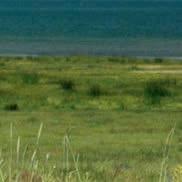

We clearly saw that there was a very abrupt drop in donations, especially in the spring of 2022. During the course of the year, donations returned to normal levels and we assume that it was more of a dent. We hope that we can continue to count on our donors’ support. We are dependent on this support because we have to provide our own co-financing to be able to draw down many of the grants that we very successfully acquire from the public sector or from other foundations. This co-financing depends on stable income from donations.

Some key figures stand out in the 2022 annual accounts, such as the increased personnel costs. Where do these cost increases come from?
Firstly we increased the full-time post equivalents, and secondly − this has been a concern of ours for quite some time − we were able to significantly increase salaries of employees on lower salaries. In retrospect and in light of the subsequent rise in inflation, this was an important step. Moreover, the Executive Board also took far-reaching decisions at the end of 2022 in order to be able to absorb the income drop in real terms that would otherwise be on the cards. In 2023, we significantly increased all salaries and paid out an inflation compensation payment to all staff.
There was also a significant increase in total income. Where did that money come from?
The increase in total income in 2022 was considerable – a 23 percentage point rise compared to the year prior, mainly due to an increase in external grants. The MAVA Foundation, which advised and assisted us for some 20 years, closed its doors in 2022, releasing substantial funds shortly before ceasing activities. It is important to emphasise that we will pass on a large proportion of these funds to our large NGO partner network in order to then successfully and effectively implement joint conservation projects. As we have known for a long time that the MAVA Foundation would cease its funding activities, we successfully established contacts to other foundations that will now be funding us. All of these developments came together in the 2022 financial year.
Let‘s look at some other striking features in the annual accounts: a 450 percent cost increase for seminars, 365 percent more for travel, a 300 percent increase in training costs. What happened there?

It‘s all connected to the pandemic. There have simply been new opportunities to meet again. There were many more events as well as workshops with our partners, which are very important for our work and the achievement of our objectives. Another outlier is the item “other operating expenses” which increased two-and-a-half-fold. This includes, among other things, the additional claims reserve for externally funded projects. Whenever a project is completed, a percentage of the funding volume is transferred to a reserve − a buffer to cover potential subsequent claims. And since we completed all MAVA projects in 2022, this amounted to a considerable sum! That‘s why these expenses have gone up so much.
The income and expenditure headings used for the purposes of this Activity Report correspond to the prescribed specifications as part of the guidelines for the DZI (German Central Institute for Social Issues) Seal of Approval. The headings therefore diverge somewhat from the customary breakdown set out in the Handelsgesetzbuch (German Commercial Code), especially in the profit and loss account. Amongst the criteria assessed by DZI are two important threshold values, i.e. the share of expenditure on advertising and administration to total relevant expenditure, and the ratio of expenditure on advertising to total income from donations. Not all expenditure is included for the purpose of calculating the share of administrative expenditure: Expenditure on portfolio management and commercial activities are not taken into consideration. Given that the DZI calculations of the shares of expenditure under the different headings are only undertaken following the publication of the Activity Report, there may be some discrepancies between EuroNatur‘s calculations and the DZI results.
In March 2023, EuroNatur Foundation was again awarded the DZI (German Central Institute for Social Issues) Seal of Approval. EuroNatur had applied for the seal in August 2022 based on its 2021 annual accounts. The result of the DZI assessment of EuroNatur Foundation was a positive one: It confirmed that we meet the seven DZI Seal of Approval standards (please refer to the chapter on „Transparency“ on p. 46).
Let‘s dare to look ahead: What issues will the foundation be dealing with in the coming years?




The discontinuation of the MAVA Foundation‘s funding activities in 2022 was pretty drastic for EuroNatur. But we succeeded in finding many more supporters and partners. However, it will always be crucial for us to win new supporters, because that’s key for future successes. Like at the beginning of 2023, when a dream of ours came true: The Albanian government designated the Vjosa as the first European Wild River National Park, owing in part to the pressure we had exerted. And we need these kinds of wins, not only for nature in Europe, but also because it gives us enormous motivation. We currently see that there is a considerable backlash against nature conservation and biodiversity. Populist opinions are gaining ground and discourse grounded in facts is becoming increasingly difficult. That‘s why we need voices like those of EuroNatur, which keep pointing back at the evidence and don’t let up. In this context, we are already looking ahead to the European elections in June 2024. They will set the course for the future of biodiversity protection in Europe, as well as globally, because Europe is an important international player in this regard.
Questions: Anja Arning

A further strengthening of EuroNatur’s asset base is of great importance for the foundation’s independence and performance as a successful advocate for nature in Europe. The increase in the foundation’s capital creates planning certainty and independence. Endowments and bequests therefore provide immensely valuable support to us and are a great sign of confidence, confidence that we endeavour to honour with our commitment. In 2022, endowments and large portion of the revenue from bequests were transferred to the foundation’s capital stock. This has further strengthened EuroNatur Foundation’s financial position. We expect that revenues from portfolio management will, as a minimum, remain stable in the coming years.

In 2022, the following individuals bequeathed funds to EuroNatur Foundation upon their death. We are greatly indebted to them and will honour their memory.
Ferenc Hamburger, Walddorfhäslach, Germany
In 2022, EuroNatur managed three non-autonomous foundations and three earmarked named funds. The named funds’ capital ( € 496k) was increased by € 3k compared to the previous financial year while the capital of the non-autonomous foundations ( € 2,169k) remained unchanged. In the reporting year, yields from non-autonomous foundations continued to exclusively benefit EuroNatur project activities.
Dr. Manfred and Gudrun Keim Fund
Ludwig Raue Memorial Fund
Lappat Fund
EuroNatur Fund for Eastern Germany
EuroNatur Fund for the Protection of Migratory Birds


Elisabeth Seifert-Becker’s endowment fund for the protection of wolves in memory of Viktoria Neumann, Emilie and Franz Seifert
EuroNatur’s successes in nature conservation in Europe in 2022 could only be achieved with the support provided by our donors, sponsors and legacy donors as well as providers of grants and commercial sponsors. We are most grateful for your support!

In the 2022 financial year we received € 1,638k in donations, € 136k of which have not yet been claimed due to earmarking. The latter are expected to be claimed in the following year and at the time of actual spending of funds.
The endowments of € 6k (p.y. € 19k ) are not included in the income statement.
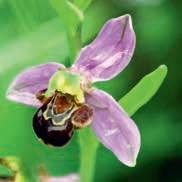
In politics, business and society at large, there is still not enough decisive action to initiate the turnaround we so urgently need to halt the destruction of nature. This makes it all the more important to take personal initiative and responsibly help shape the world, even beyond one‘s own lifetime. Karin and Gerhard Schaad, Regina Harten and many other people therefore decided to make a bequest to EuroNatur.
If you would like to find out more about bequests, please visit our website at www.euronatur.org/en/legacy-giving or feel free to get in touch with us directly.
Your contact is: Sabine Günther, sabine.guenther@euronatur.org, Phone + 49 (0) 7732/927217
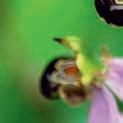

We have a great love of nature, so it was obvious to us that our estate should one day benefit its conservation. As we are part of nature, this decision in fact underscores our love for life and our legacy is going to benefit many people.
Karin SchaadThe presentation of how donations to EuroNatur are used is clear and compelling and their donor liaison is excellent. There is a palpable sense of commitment among the staff right up to the management level. We can see that people stand behind their work. I also have great confidence in the way EuroNatur conducts business. I would not want to bequeath anything to someone who would use the inheritance to cover high levels of administrative expenditure.
Gerhard Schaad
I feel like I’m not just a number, a source of regular account transfers. If I have questions, they are answered. There’s no need to hold back with either praise or critical questions.
Regina Harten
For a non-profit foundation, EuroNatur Foundation’s capital stock is relatively slim. Therefore the organization is urgently dependent on donations and third-party grants so as to be able to discharge its mandate as an advocate of nature in Europe. We are aware of the fact that with this funding comes great responsibility and day-in, day-out we work towards using the funds as efficiently as possible. Due to differences in legal systems, language barriers and potentially greater corruption risks, the manner in which these grants and donations are passed on to partner organizations abroad is also a sensitive issue, one that is predicated on a very good network of contacts built up over many years. Moreover, a multi-level control system is essential for the correct assessment of and effective response to risks. Risk mitigation measures must also be adopted for capital investments.
The Covid-19 pandemic, the Russian war of aggression on Ukraine and their effects on national economies have shown that our lives’ economic situation can change quickly and dramatically. As a result of the energy price crisis, everyone‘s expenses have gone up sharply and, as a consequence, the inflation rate has risen significantly. That there is no interest without risk has now become an undisputed fact. In this light it is becoming increasingly difficult to find some middle ground between security and appropriate financial returns. Charting our course in this respect we abide by the following principles: EuroNatur Foundation invests its equity capital in low-risk funds, taking into account ethical and environmental criteria (please refer to the chapter on “Transparency”). Moreover, reserves are built up in order to be able to even out fluctuations in revenues. Over the past years we have established a special reserve for gains from transactions which can in turn be used to cover potential losses of future transactions (“Umschichtungsrücklage”) as a safeguard against potentially required depreciation of fixed assets. In the 2022 financial year, this has now proven to be a meaningful and forward-looking move, as it has made it possible to absorb the necessary unscheduled write-downs on financial assets.
EuroNatur Foundation has very consciously not opted for a Europewide network of offices with full-time employees, thus eliminating considerable administrative expenditure. We are primarily concerned with cooperating with existing conservation organizations that are well connected in their local areas and are successful in their endeavours. In many countries of Southern and Eastern Europe, nonprofit and independent conservation organizations are few and far
between. The lack of competent and trustworthy partners limits our options. It is for this reason that EuroNatur invests in the systematic development and strengthening of civil society in Southern and Eastern Europe. EuroNatur’s project work is always predicated on cooperation with a local partner organization. If there is no such partner organization in a particular region, it is reason enough for EuroNatur not to engage.
We have self-imposed strict rules on budgetary control. All outward payments are checked for mathematical and factual correctness. Payment orders are always subject to the “Two-man rule”. Target-performance comparisons are carried out on a monthly basis, allowing for swift detection of potential irregularities. Our 2022 annual accounts were audited by the independent auditing and tax accounting firm WISTA AG and endorsed with an unqualified audit certificate.
We regularly scrutinize our internal processes, which allows us to continuously increase our efficiency. We also analyse the work of our partner organizations and work with them to find possible ways to increase their efficiency and effectiveness. Our partners’ statements of expenditure are checked by the responsible project manager for factual accuracy and by the administration department for financial accuracy. All statements of expenditure are submitted to the managing director for approval prior to funds being released. In order to increase the efficiency of our work we conduct staff development and training, in terms of both content and methodology, for ourselves and our partners on an ongoing basis.
In 2022, EuroNatur Foundation was once again awarded the DZI (German Central Institute for Social Issues) Seal of Approval. It will expire at the end of the third quarter of 2023. The Seal of Approval certifies that, amongst other things, EuroNatur meets the DZI’s seven standards as follows: EuroNatur conducts its work in keeping with its statutes; the organization’s management and oversight are adequately structured, clearly separated and are being exercised effectively; in our solicitation of donations and public relations work we provide information in a clear, truthful, factual and open manner; we openly and comprehensively report on our work, structures and finances; remuneration is paid taking into consideration the organization’s charitable status, qualifications, levels of responsibility, and customary pay standards; the procurement and use of funding as well as the organization’s financial status are traceability documented and adequately verified; the proportion of funds spent on advertising and administration in 2022 was at an appropriate level in accordance with the DZI standards (“appropriate” = 10 % to 20 %). The effectiveness of the organization’s spending is monitored and results are documented and published.
EuroNatur has been a signatory to Transparency International Germany’s “Initiative Transparente Zivilgesellschaft” (Initiative for transparency in civil society) since 2010. Signatories to the initiative voluntarily commit to publishing ten particular items of information about their organization on their homepage. These include i.a. their statutes, the names of essential decisionmakers, and information on how they are funded, how they use their funding, and their personnel structure.
In 2022, EuroNatur once again voluntarily submitted to an audit of its annual accounts by an auditor. The auditing and tax accounting firm WISTA AG audited EuroNatur Foundation’s 2022 annual accounts in accordance with Par. 317 ff. of the German Commercial Code (HGB) and in accordance with the accepted standards for the review of financial statements as set out by the Institute of Public Auditors in Germany (IDW) and endorsed the accounts with an unqualified audit certificate. An extract from the audit certificate states the following:
We have audited the annual financial statements, consisting of the balance sheet as of December 31, 2022, profit and loss account for the fiscal year from January 1 to December 31, 2022, and the Annex. Additionally we audited the management report for the fiscal year from January 1 to December 31, 2022.
In our opinion, based on the information obtained during our audit, the financial statements are in all material respects compliant with the provisions of commercial law applying to corporations in Germany, and convey, in accordance with the German principles of proper accounting, a true and fair view of the Foundation’s net assets, liabilities and financial position as of December 31, 2022 and the results of operations for the fiscal year from January 1 to December 31, 2022. The position statement, as a whole, provides an accurate picture of the Foundation’s position. In all material respects this position statement is consistent with the annual financial statements, is compliant with the German statutory provisions, and adequately depicts the opportunities and risks arising from future developments. Pursuant to Section 322 (3)(1) HGB (German Commercial Code) we declare that our audit did not lead to any objections as to the correctness of the annual financial statements or the position statement.
June 15, 2023, WISTA AG, Mannheim“
EuroNatur Foundation’s foundation capital now amounts to almost € 6.1 million. Moreover, EuroNatur Foundation holds assests of more than € 2.2 million in trust for the benefit of three nonautonomous foundations. In keeping with the organization’s philosophy, investment decisions are based on environmental and ethical criteria. Both inclusion and exclusion criteria are applied to these decisions. As a minimum, investment products are not considered if they invest in companies involved in nuclear power, agrochemicals, weapons, genetic engineering, pornography, alcohol, tobacco, the motor industry, the oil and coal industries, airline companies, or if they are invested in government bonds in nations practicing capital punishment, actively driving forward nuclear energy, or which are considered corrupt. Our main financial service providers for asset management purposes in 2022 were the Bank Vontobel Europe AG, Munich Branch, and the V-BANK AG in Munich, Germany. We manage a large part of the assets ourselves and since the summer of 2017 we have also consulted with an independent financial advisor on a fee basis.
The Foundation is organized in three departments: Nature Conservation, Communication and Administration. These departments provide for seven functional levels: Administration/Communication I-III, Project Management I and II (Nature Conservation), Brussels and Head of Department. Remuneration bands have been set for each of the levels, extending 20 % either side of the mid-point. The midpoints are € 43k per annum for Administration/Communication I, € 47k for Administration/Communication II, € 57k for Administration/Communication III, € 51k for Project Management I, € 61k for Project Management II, and € 65k for Head of Department. The employees in Brussels receive an average of € 59k per annum.
In 2022, the Executive Director received an annual remuneration package of € 103k gross. Without exception all members of the Presiding Committee and the Board of Trustees act in a voluntary capacity and only receive reimbursements for cost incurred, but no flat-rate expense allowances.
Six times a year EuroNatur Foundation sends out information to its donors to keep them in touch with ongoing projects and requests support for concrete endeavours. Similarly, support for individual projects is solicited, and information provided, through the organization’s website at www.euronatur.org, the digital EuroNatur newsletter and emailings. In addition, regular donors receive the EuroNatur magazine four times a year as well as topical project reports containing comprehensive information and reports on current developments in the projects. In 2022, EuroNatur Foundation conducted its own donor liaison and fundraising. With the exception of printing works, no aspect of these tasks was outsourced to any agency or external service provider.
One of the most important tenets of EuroNatur’s work is the efficient deployment of funds entrusted to us by our donors and by the organizations (both governmental and non-governmental) that support our work. Systematic planning of activities and comprehensive impact monitoring are preconditions to the efficient use of funds.
EuroNatur Foundation takes both a supportive and an operative role. For projects undertaken by EuroNatur in cooperation with its partner organizations, and which in most instances are in receipt of third-party financial support (from both governmental and non-governmental sources), EuroNatur reports back in detail to the financial backers. Impact monitoring already begins at the stages of project development and project application. EuroNatur develops projects based on comprehensive situational analysis and needs assessments. Together with our partners we formulate the overall objectives and prepare project applications based thereon. These can only attract funding if the objectives are clearly set out and if activities are proposed that serve to meet these objectives. Evidence of the use of funds must include comprehensive evaluations of the achievement of set objectives as well as rationales for potential changes in or adjustments to activities or even objectives. In order to receive grants from EuroNatur, applicants must present cohesive project designs in keeping with the principles set out above. The partner organization’s reports are subject to comprehensive evaluation by EuroNatur and our project managers regularly visit the project areas to discuss the projects’ progress – as long as there is no pandemic that prevents travel.
Both positive developments and difficulties arising are assessed in order to allow for procedural adjustments to be made and to learn lessons for the future. Progress reports document project development up to the point of the projects’ completion.
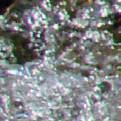
In 2022, the projects implemented by EuroNatur Foundation focused on the following areas:
Protecting Europe’s rivers and river landscapes

Protecting migratory birds in Europe
Protecting large carnivores in Europe
Protecting Europe’s last wilderness areas
Protecting species-rich cultural landscapes in Europe
EU nature conservation policy
This Activity Report describes a selection of projects under individual priority headings. EuroNatur Foundation has supported and implemented a number of additional projects and initiatives over and above these priorities, a more detailed description of which is beyond the scope of this report.
Funding spent on this priority: 889,000 Euro
Projects:

Protection and development of the European Green Belt and ongoing advancement of the initiative (Partners: all EGBA members as well as the actors involved in the European Green Belt initiative; Funding: MAVA Foundation, EuroNatur’s donors), BESTbelt - Connecting and protecting unique landscapes throughout Europe by empowering local stakeholders (Partners: BUND, members of the EGBA and stakeholders involved in the European Green Belt Initiative; Funding: European Union, EuroNatur donors), Improving connectivity along the Balkan Green Belt (Partners: PPNEA, MES; Funding: German Federal Ministry for the Environment with funds from the Advisory Assistance Programme (AAP) for environmental protection in Central and Eastern Europe, the Caucasus, Central Asia and other countries neighbouring the European Union), Implementation of model projects to support sustainable development and nature conservation in the Šar/Korab-Koritnik region along the Balkan Green Belt (Partners: MES, PPNEA, CNVP; Funding: DBU, Aage V. Jensen Charity Foundation, MAVA Foundation, EuroNatur’s donors), Strengthening NGO-led Conservation in the Transboundary Prespa basin (Partners: MES, PPNEA, SPP; Funding: PONT, Aage V. Jensen Charity Foundation, EuroNatur’s donors)

Funding spent on this priority: 1,634,000 Euro Projects:
“Save the Blue Heart of Europe” campaign (Partners: Riverwatch, ClientEarth, DPRS, Eko-svest, Front 21/42, North Green Association, Res Publica; Funding: MAVA Foundation, ManfredHermsen-Stiftung for Nature Conservation and Environmental Protection, Patagonia, Fondation Genevoise de Bienfaisance
„Valeria Rossi di Montelera“, Aage V. Jensen Charity Foundation, EuroNatur’s donors), Saving Europe’s last free flowing wild river – Vjosa/Aoos (Partners: Riverwatch, EcoAlbania, MedINA, Pindos Perivallontiki, IUCN ECARO, Tour du Valat, Patagonia; Funding: MAVA Foundation, Patagonia, Fondation Genevoise de Bienfaisance „Valeria Rossi di Montelera“, EuroNatur’s donors), Protecting the Narta Lagoon in the Vjosa Delta from destruction by the Vlora International Airport Project (Partners: PPNEA, AOS; Funding: DIMFE, EuroNatur‘s donors), Restoration of rivers and floodplains on the Sava River (Partners: HDZPP, The Green Ring of the Zagreb County, all members of the SavaParks network; Funding: Aage V. Jensen Charity Foundation, EuroNatur’s donors), Complaint to the EU regarding river engineering measures on the German-Polish border section of the Oder River (Partners: SOT, our Polish river advocate, environmental lawyer Malgorzata Smolak; Funding: EuroNatur‘s donors)






Funding spent on this priority: 1,275,000 Euro
Projects:
Safeguarding the bird migration route along the Adriatic Flyway (Partners: BirdLife, VCF, IUCN Med, Tour du Valat, HDZPP, Biom, DOPPS, BPSSS, CZIP, MSJA, Naše ptice, MES, AOS, PPNEA, WWF Spain, WWF Greece, ATN; Funding: MAVA Foundation, FOS, Gordon & Betty Moore Foundation, Walton Family Foundation, Natum Foundation, EuroNatur’s donors), Protecting the Ulcinj salt flats (Partners: CZIP, MSJA, BirdLife, Tour du Valat; Funding: MAVA Foundation, EuroNatur’s donors), Bright Future for Black Vulture in Bulgaria (Partner: Green Balkans; Funding: EU LIFE, EuroNatur’s donors), Protecting European wet meadows and pastures, in particular in the European Stork Villages (Partners: European Stork Villages and their national conservation partners; Funding: EuroNatur’s donors)



Funding spent on this priority: 858,000 Euro
Projects:
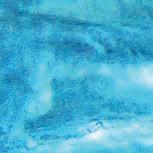

Protecting brown bears in the Cantabrian Mountains (Partner: FAPAS; Funding: EuroNatur’s donors), Protecting brown bears in Bosnia-Herzegovina and Montenegro (Partner: CZIP, CZZS; Funding: Bernd Thies Foundation, EuroNatur’s donors), Crossborder protection of brown bears in the tri-border area of Albania, North Macedonia and Greece (Partners: PPNEA, MES, Callisto; Funding: Fondazione Capellino), Protecting brown bears, lynx and grey wolves in the northern Dinarides (Partner: University of Zagreb, Carnivora Magna; Funding: EuroNatur’s donors), Balkan Lynx Recovery Programme (Partners: MES, PPNEA, ERA, Stiftung Kora; Funding: MAVA Foundation, Foundation Hans Wilsdorf, EuroNatur’s donors), Preventing the extinction of the Dinaric-South-Eastern Alpine lynx population through reinforcement and long-term conservation (Partners: University of Zagreb, Slovenia Forest Service, Hunters Association of Slovenia,
Institute of the Republic of Slovenia for Nature Conservation, Technical University in Zvolen, University of Ljubljana, Association Progetto Lince Italia, Karlovac University, Biom, ACDB, Italian Carabinieri special command unit for the protection of forests, the environment, and the agri-food sector; Funding: EU LIFE, EuroNatur’s donors), Protection of large carnivores in BadenWuerttemberg, Guidelines for dealing with wolves (Partners: EuroNatur is a member of the ‘Arbeitskreis Wolf’ working group as part of the ‘AG Lynx Baden Wuerttemberg’ working group; Funding: EuroNatur’s donors), Protecting the Mediterranean monk seal colony at Cap Blanc (Partner: CBD Habitat; Funding: EuroNatur’s donors), Protecting Mediterranean monk seals in the Eastern Adriatic (Partners: MOm, PPNEA, CZIP, Biom; Funding: MSA, EuroNatur’s donors)
Funding spent on this priority: 408,000 Euro
Projects:
Protecting old-growth and primeval forests in Romania (Partners: Agent Green, ClientEarth; Funding: Nando and Elsa Peretti Foundation, EIA, EuroNatur’s donors), Ecological forest conversion of monoculture pine forests in Brandenburg to seminatural mixed forests (Partners: Nature Park administrations at Dahme-Heideseen, Märkische Schweiz, and Schlaubetal, German Federation for Nature Conservation (Nabu) - Märkische Schweiz regional association, Stiftung Naturschutzfonds Brandenburg, local conservation groups and farmers; Funding: EuroNatur Trust for Eastern Germany, EuroNatur’s donors)

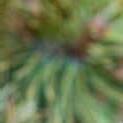


Funding spent on this priority: 195,000 Euro
Projects:
Support for the protection and sustainable regional development of the Bosnian karst polje Livanjsko Polje (Partners: Naše ptice, CZZS; Funding: DIMFE, EuroNatur donors), Alliance for Mediterranean Nature and Culture (Partners: 14 organisations in the Mediterranean region focussed on the protection of cultural landscapes; Funding: MAVA Foundation), Promotion of extensive management of ecologically valuable meadows and pastures in Bulgaria by means of the Common European Agricultural Policy (Partner: STEP; Funding: MAVA Foundation, EuroNatur donors), Safeguarding two important bat roosts in Brandenburg and Poland (Funding: Interreg, Ludwig Raue Memorial Fund, EuroNatur donors)
Funding spent on this priority: 235,000 Euro
Projects:
RED4Nature campaign (Partners: Riverwatch, Bankwatch, Agent Green, ClientEarth; FFF Poland, WWF, BirdLife, NABU, CAN Europe, EEB, SolarPower Europe, EGEC; Funding: MAVA Foundation, Patagonia, Nando and Elsa Peretti Foundation), Implementing nature protection and restoration legislation in the EU (Partners: EuroNatur partners in the areas affected; Funding: Nando and Elsa Peretti Foundation, MAVA Foundation), Critical position statement regarding the use of funds from the EU‘s Covid-19 recovery fund - known as the Recovery and Resilience Facility (Partners: Bankwatch, DOPPS, Zelena Akcija, Hnutí Duha, Agent Green; Funding: MAVA Foundation), Biodiversity financing (Partners: Bankwatch, Balkani, Zelena Akcija, DOPPS, Green Liberty Latvia; Funding: EURENI funding programme)
Partners:
ACDB: Association for the Biological Diversity Conservation
ADA: Austrian Development Agency
AOS: Albanian Ornithological Society
ATN: Association for transhumance and nature conservation in Portugal
Biom: BirdLife Croatia
BPSSS: Bird Protection and Study Society of Serbia
CAN: Climate Action Network
CBD-Habitat: Foundation for the Conservation of Biodiversity and its Habitat in Spain
CNVP: Connecting Natural Values and People
CZIP: Center for Protection and Research of Birds of Montenegro
CZZS: Center for Environment in Bosnia-Herzegovina
DOPPS: BirdLife Slovenia
DPRS: Slovenian Native Fish Society
EEB: European Environmental Bureau
EGEC: European Geothermal Energy Council
EGBA: European Green Belt Association
EIA: Environmental Investigation Agency
ERA: Environmentally Responsible Action group
Fapas: Wild animal protection fund (Spain)
FFF: Fridays for Future
FWFF: Fund for Wild Flora and Fauna




HDZPP: Croatian Society for Bird and Nature Protection
IUCN: International Union for Conservation of Nature
IUCN ECARO: IUCN Eastern Europe and Central Asia
Funding:
BMUV: German Federal Ministry for the Environment, Nature Conservation, Nuclear Safety and Consumer Protection
DBU: German Federal Environmental Foundation
DIMFE: Donors‘ Initiative for Mediterranean Freshwater Ecosystems
EURENI: EURopean ENvironment Initiative
FOS: Foundation of Success
LIFE: L’Instrument Financier pour l’Environnement
MSA: Monk Seal Alliance
PONT: Prespa Ohrid Nature Trust
UBA: German Environment Agency
Kora: Foundation for carnivore ecology and wildlife management in Switzerland
MedINA: Mediterranean Institute for Nature and Anthropos
MES: Macedonian Ecological Society
MOm: Hellenic Society for the Study and Protection of the Monk seal
MSJA: Dr. Martin Schneider-Jacoby Association
PPNEA: Protection and Preservation of Natural Environment in Albania
SOT: Tourism Organization of Stepnica
SPP: Society for the Protection of Prespa
STEP: Society for Territorial and Environmental Prosperity
VCF: Vulture Conservation Foundation
WWF: World Wide Fund for Nature
The EuroNatur team in May 2023 (in rows from left to right):
Front:
Marco Panista, Christian Stielow, Annette Spangenberg, Antje Henkelmann, Kerstin Sauer
Middle:

Sandra Wigger, Nadya Moussa, Anika Konsek, Lisa Leschinski, Gabriel Schwaderer, Sabine Günther, Anja Arning, Prof. Dr. Thomas Potthast, Dr. Amelie Huber, Katharina Grund, Ines Fantinato, Anne Katrin Heinrichs, Daniela Löchle, Ilka Beermann, Dr. Anna-Katharina Wöbse

In the back:
Mira Bell, Patrizia App, Leonie Kraut, Bruna Campos, Isabel Wintermantel, Samuel Carleial Fernandes, Michael Fantinato
Presiding Committee
President: Prof. Dr. Thomas Potthast
Vice president: Dr. Anna-Katharina Wöbse
Members of the Presiding Committee: Dr. Thomas Griese, Prof. Dr. Hannes Knapp, Jörg Nitsch, Prof. Dr. Hubert Weiger
Executive Director
Gabriel Schwaderer, Radolfzell
Imprint
EuroNatur Stiftung
Westendstraße 3
D - 78315 Radolfzell
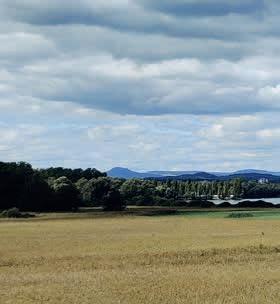

Fon + 49 (0) 7732/92 72 0
Fax + 49 (0) 7732/92 72 22
info@euronatur.org
www.euronatur.org
facebook.com/euronatur
youtube.com/euronatur
twitter.com/EuroNaturORG
instagram.com/euronatur
linkedin.com/company/euronatur
Writers
Anja Arning, Katharina Grund, Gabriel Schwaderer (V.i.S.d.P.), Christian Stielow
Translation
Ute Bohnsack, Email: agroeco@eircom.net

Cover photo depositphotos / nblxer - Finnland


Cover & graphic design
Kerstin Sauer; EuroNatur Service GmbH
ISSN 0945-148X
Printing
Fischer Druck GmbH & Co. KG, printed on 100 % recycling paper
Donations
Bank für Sozialwirtschaft, Köln
IBAN DE42 3702 0500 0008 1820 05 SWIFT/BIC BFSWDE33XXX
Conservation needs action - and money!
Our successful work is built on targeted strategies, efficient methods, sound knowledge, rich practical experience and respectable partner organizations in the project regions. But existing opportunities translate into concrete measures only with the help of our donors.
Donations to registered charities such as EuroNatur are tax-deductible. Please help Europe’s nature and wildlife.
Please spread the word and help us find new supporters for EuroNatur!
www.euronatur.org
